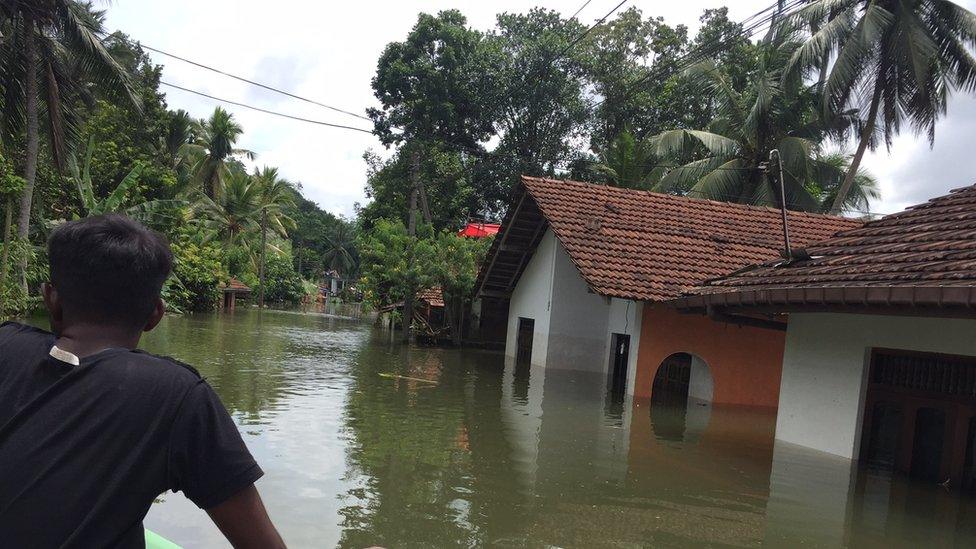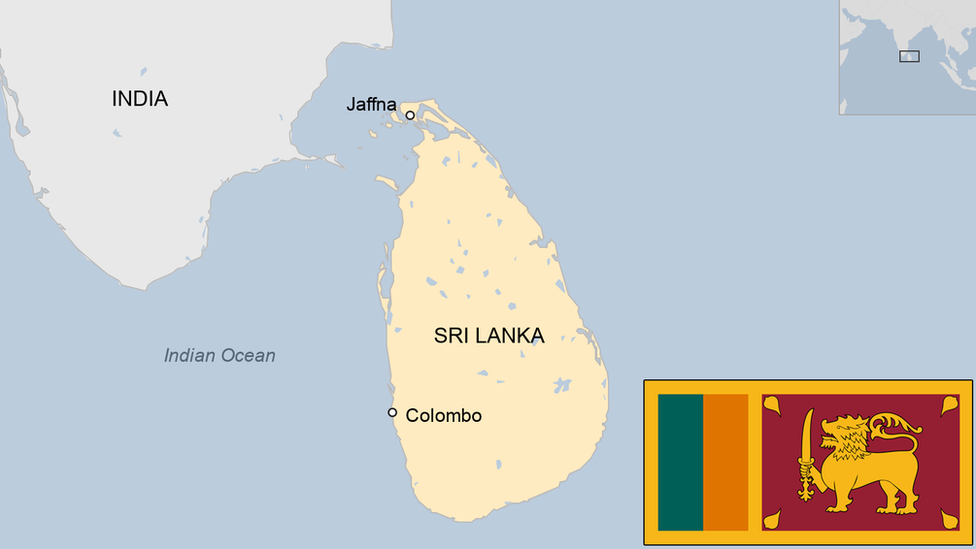Sri Lanka floods: Residents afraid as more rain forecast
- Published
Residents brave flood waters in Matara district
Sri Lankans recovering from devastating floods are bracing themselves for more rain as emergency teams rush to deliver aid.
Floodwaters receded on Sunday but many villages were still inundated.
At least 164 people have been killed and nearly 500,000 displaced in the flooding and mudslides triggered by heavy rains on Friday.
Another 104 people are still missing, officials said. Military boats and helicopters are helping rescuers.
Sri Lanka's Daily Mirror newspaper, external said a second Indian naval ship, the INS Shardul, had arrived in Colombo with relief supplies and inflatable boats.
The INS Kirch arrived on Saturday.
The BBC's Azzam Ameen travels to one of the worst-hit areas
Correspondents say rescue workers are using a break in the weather to deliver much-needed aid to the worst-hit areas.
The flooding is believed to be the worst since May 2003 when a similarly powerful monsoon from the southwest destroyed 10,000 homes and killed 250 people.
Most of the deaths in the latest floods were caused by landslides.


Roads in Weyangala are completely under water
Residents are scared: By Azzam Ameen, BBC Sinhala
We're now in Weyangala village in the southern Kalutara district. The village is inundated after Friday's flood, with water levels well above homes, shops, places of worship and schools. Over 50 people died in this district, one of the worst affected.
The roads are completely under water.
Residents rely on boat services to get to their homes or source supplies. We see families and children waiting for supplies.
Thousands here have been displaced and are cut off from basic services. In addition to severe flooding, this village witnessed a mudslide that claimed seven lives, including those of six children.
Water levels are gradually receding in many areas but with more rain predicted on Monday residents are scared.

At least five mudslides were reported in Kalutara district and residents of the town of Baduraliya said it had been badly affected.
BBC Weather's Nick Miller looks at the impacts in Sri Lanka
"Water came to our house. It's very bad for us because we can't go to school, tuition classes, and we can't go to the town. and many people face this situation. Many houses are flooded," Devindi Dissanayake told Reuters news agency.
Sri Lanka's Disaster Management Centre (DMC) also issued evacuation notices to residents along the Kelani river, which flows through the capital Colombo, as water levels were rising rapidly.
- Published21 May 2016

- Published4 October 2024
